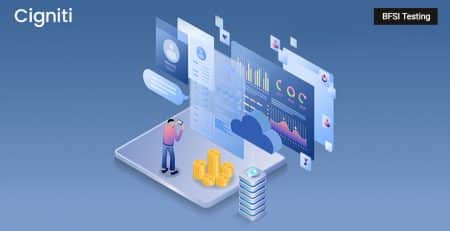Accelerate Digital Transformation by Migrating Core Banking to the Cloud
|
Listen on the go!
|
Core (Centralized Online Real-time Exchange) Banking is a system that enables a group of bank’s branches to perform transactions between accounts in different branches and share the data in real time.
According to Gartner, “a core banking system is a back-end system that processes daily banking transactions and posts updates to accounts and other financial records.”
Core banking systems typically include liability (deposits) products, asset (loan) products, trade finance products, payment systems, and ancillary services like clearing and demand drafts with interfaces to general ledger systems and reporting tools.
Customers could only transact in the branch where they maintained the account until the 1st generation core banking solutions were implemented in the 1970s and 80s. Further, it used to take at least a day for a transaction to get updated in the account because each branch used to maintain a local server and data from the branch server was sent in batches to servers in data centers only at the end of the day.
Over the decades, core banking solutions evolved from monolithic, batch-based to cloud-based microservices architectures to meet the market demands and take advantage of the emerging trends in software architecture.
As per a recent study, “around 70% of banking executives are reviewing their core banking strategy, but only 5% of banks modernize their platforms each year.”
This is because the perceived risk of failure outweighs the benefits. However, many banks continue to rely on legacy IT systems implemented in the 1970s and 1980s, and the necessity to modernize is approaching with great speed.
Four Generations of Core Banking Models
As per cloud-native banking solutions provider Thought Machine, the four generations of core banking models are:
First generation: a core banking model that involves a series of branches that close at 5pm, at which point end-of-day positions are calculated and collected in a centralized general ledger that acts as a repository for accounting data in the bank.
Second generation: a core banking model that was extended to support channels such as ATMs and call centers, and subsequently, newer channels and increased demand for server capacity, while the underlying architecture remained largely unchanged.
Third generation: a core banking model that still largely used batch-based processing and was monolithic in style, but was no longer tied to the expensive mainframe, allowing banks to survive by modernizing the technology stack around a legacy core and having more customizable product engines. The key players in this space were the likes of Oracle, Finacle, and Temenos. Adoption of these core banking solutions comes mostly from global tier 2 and 3 banks, particularly in emerging and frontier markets.
Fourth generation: a core banking model that is built from scratch and that embraces the elastic scalability of the cloud by leveraging a microservices-based architecture. These solutions are Ultra-Lean, Extremely Agile, Configurable, and Composable.
The Core Banking Solution on the Cloud has served as the catalyst for digital banking transformation. These benefits will make financial institutions more future-ready and improve customer value and revenues.
As per IDC Financial Insights, “the rate of change required in banking has increased exponentially during 2020 and will likely increase even more. This exponential acceleration of the change rate demands banks migrate to a fourth-generation core as soon as possible if they want to stay competitive.”
Migration to the cloud can be categorized based on the type of core banking modernization, delivery of the cloud models, and cloud deployment models which are listed below.
Major types of Core banking Modernization:
- Augmenting the Core: Augmenting existing legacy core banking solutions and power APIs via cloud native solutions to provide scalability and agility. Large banks with in-house and complex core banking systems are preferring this as they have invested a huge amount in their existing core banking solutions. It’s usually a hybrid deployment model with cloud overlays of existing legacy core infrastructure.
- Migrating the Core: Lift and shift the existing core banking solution from legacy to the cloud, wherein cloud infrastructure replaces the on-premises data center.
- Replacing the Core: Rebuild or migrate to a cloud-native core banking system that maximizes the use of new cloud technologies.
Delivery of Cloud Models:
- IAAS: Infrastructure as a service where service provider manages the Storage, Servers, Networking and Virtualization
- PAAS: Platform as a service where service provider manages Middleware, O/S, Runtime in addition to the IAAS
- SAAS: Software as a service where service provider manages Application as well as data in addition to the PAAS
Cloud Deployment Models:
- Public Cloud: cloud computing services provided by suppliers to multiple customers via a cloud computing architecture that allows customers to share computing resources.
- Private Cloud: cloud computing services owned and operated on-site by a single organization
- Hybrid Cloud: a mixed environment combining public cloud and private cloud or on-premise solutions.
- Community cloud: a public or private cloud shared by an industry group, government agency, or other association with similar demands or interests.
No two banks are alike. Similarly, the cloud migration strategy for each bank will be unique based on various factors like the existing core system, delivery of cloud model, cloud deployment model, and the type of modernization. The important factor here is to collaborate with the right cloud services provider and the right technology partner. However, a typical cloud migration project plan involves Migration Strategy Plan & Architecture, Migration, Integration, Testing & Acceptance, Run & Optimize.
There are numerous benefits of Core banking of Cloud. Apart from Cost-efficiency, flexibility to scale on-demand, Infrastructure savings, Regulation Compliance, Automation and Security, banking on the cloud is the next logical step for banks because banks can focus on their core businesses instead of managing.
As per Ben Snowman of Mambu, “Banks can reduce IT spend on core banking technology by 9% annually, by moving to ‘last generation’ solutions. However, when banks move to a modern ‘next generation’ cloud native banking platform this can rise to 50%. The payback time is also much quicker, usually within 12 months whereas with ‘last generation’ platforms payback is more than 4 years.”
The benefits of the cloud are huge, and many of the world’s biggest banks are making major cloud commitments. For example, JP Morgan Chase is replacing its core banking system with a Google-inspired cloud platform from Thought Machine.
In summary, the benefits of migrating core banking to the cloud are evident and significant. Banks will have to design a roadmap to transition the core to the cloud. Once the banks have determined their preferred platform, target architecture, migration strategy, and deployment model, they can proceed with their cloud migration.
Thus, they can save the effort of maintaining enormous hardware infrastructure and focus on delivering high quality customer service and introducing competitive and innovative products to enhance customer satisfaction.
Conclusion
A cloud migration journey can present substantial implementation challenges. These risks potentially lower an organization’s ability to achieve some of its critical business outcomes around flexibility, speed, and agility (in terms of number and frequency of workloads), cost optimization, customer experience, etc. The Cloud Migration Assurance player validates the migration journey at each stage to minimize downstream migration risks.
Pre-migration advisory, migration assurance, and post-migration validation are all part of Cigniti’s Cloud Migration Assurance Services. Our AI-enabled quality engineering platform, BlueSwan, delivers testing services throughout the migration lifecycle.
Schedule a discussion with our Cloud Migration Assurance experts and BFSI Consulting & Testing experts to learn more about accelerating digital transformation by migrating core banking to the cloud.





Leave a Reply